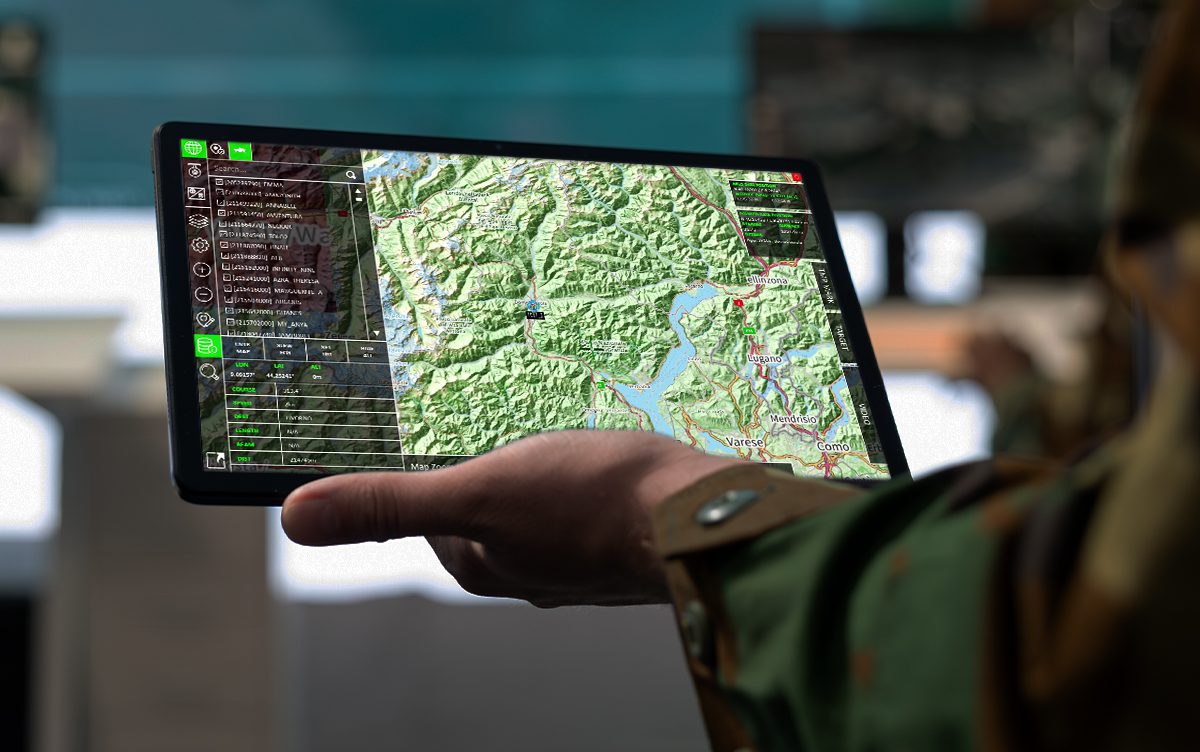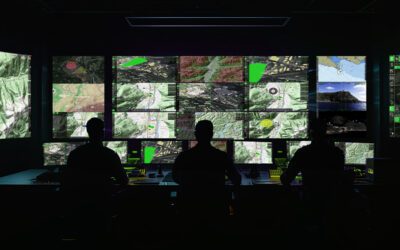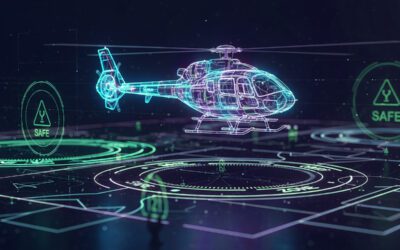There is no question that Artificial Intelligence has a significant role to play in modern warfare. AI in the military is where the drive towards AI in general really started, and the military applications of artificial intelligence are limitless. Not only can AI work autonomously in locations and conditions that would put both soldiers and civilians at risk, but it can also work alongside human operators to refine the modern military. AI-driven decision-making for joint operations is becoming more commonplace, but what is AI’s real role now and in the future?
In this article, we’ll look at the place of artificial intelligence in the defence sector, particularly how it works with airborne platforms. We’ll examine the key roles of AI in a military setting as well as how this cutting-edge technology is being used right now. We’ll also look at the role of R&D breakthroughs by industry leaders including FlySight’s innovative OPENSIGHT system, as well as where AI may take us in the future and the continuing role of Artificial Intelligence in the military.
What is AI’s current role in the military?
Artificial Intelligence military applications range from backroom data analysis to front-line operations.
One of AI’s key roles is decision-making and strategy. Its ability, alongside human operators, to process large amounts of data and filter out unnecessary ‘noise’ that could mask important information makes AI crucial to predicting scenarios and providing actionable insights.
The use of machine learning means that every time AI is presented with a challenge, it can adapt and change its assessment of a situation based on new parameters. This information can then be passed on to military leaders, allowing them to make fast and strategically accurate decisions.
Part of this process is AI’s application in surveillance and reconnaissance, and AI’s integration with Augmented Reality systems such as FlySight’s OPENSIGHT Mission Console means that data taken from real-time observations can be quickly sent upstream to be assessed and actioned. Autonomous systems such as drones and UGVs can perform this surveillance without putting human operators into hostile locations.
However, AI’s role in the military extends beyond data gathering and surveillance. It also helps strengthen cybersecurity by maintaining constant vigil and responding immediately to any threats, such as attempted hacks or breaches into critical infrastructure.
In everyday operations, AI can prove to be a useful tool in logistics and maintenance. It can optimise maintenance schedules by predicting equipment failures and streamlining supply chains, ensuring military assets are always ready to be deployed.
And finally, AI can be exceptionally useful as a training tool. Systems such as OPENSIGHT have grandfathered new AI and Enhanced Reality technology onto familiar hardware, making it easier and more intuitive for operators. This use of familiar and user-friendly systems reduces training time and allows systems to be deployed and used by military operators more quickly.
Key military applications for artificial intelligence – the current market
We’ve taken a brief look at the role of AI in the military. However, as artificial intelligence grows, expands and develops, it is also playing a crucial part in other military settings.
Autonomous decision making
This is still a conflicted area, as many people believe AI should not have the autonomy to make decisions without human intervention, especially in high-pressure combat situations. Artificial intelligence currently powers unmanned systems, including aerial, ground, and underwater vehicles, and is playing an increasing role in manned platforms such as helicopters.
While these AI-directed vehicles can perform surveillance, reconnaissance, and even combat operations with minimal human intervention, the key phrase here is ‘minimal’. Removing human intervention in decision-making in a combat zone has serious implications. So, while AI is making more decisions for itself, there is still always a human operator making the final decision.
This is particularly true when it comes to remote drone strikes on hostile combatant targets, especially if there is any risk of civilian casualties. At this point, it is impossible to justify completely autonomous decision-making, so Ai is relegated to a support role.
Battlefield predictive analysis, however, and the assessment of real-time data gathered by both AI and human operators are another matter entirely. AI can process large amounts of data in real-time, carry out targeted assessments, and remove any data that could ‘muddy the water’. This improves the situational awareness not just of the decision makers but also of the troops on the ground or in the air.
Other specific uses for AI in the military include threat detection and command and control mission systems deployed in the field of operations. These systems include some of the most cutting-edge turnkey solutions for aerial platforms, such as helicopter units, where their compact nature and the ability to create a bespoke operational console make them invaluable resources.
A Mission System like OPENSIGHT can pack a lot of technology into a simple-to-use package that works off familiar hardware. These consoles can include a huge range of AI and Enhanced Reality technology. These include but are not limited to:
- Video processing algorithms for image enhancement
- Augmented Reality real-time vector overlay superimposition
- 3D moving maps with multiple layers and real-time video-over-map projection
- Automatic target detection and classification.
These systems can also be invaluable in search and rescue operations and training missions, as well as combat missions and surveillance.
AI use for military aviation
AI has a place in the military cockpit, whether that’s a fighter jet or a vertical take-off vehicle such as a helicopter. The main advantage of artificial intelligence military technology is that it is incredibly compact and easy to utilise in a limited space. AI consoles such as OPENSIGHT’s Mission Console can be used with existing hardware, making it even easier to insert into a cramped helicopter cockpit.
AI for military aviation offers many advantages, including many already discussed. However, it also provides other roles, such as spotting anomalies and locating issues before they can compromise the safety of an aircraft and its crew. Computer vision, where images and video can be assessed and shared and used for deep learning, also makes military AI incredibly flexible. As missions change and become more complex, military AI can continually respond and adapt.
What does the future look like for AI use in the military?
While AI is already being used throughout the military for everything from training new pilots to operating autonomous vehicles, it will have far more influence in the years to come, potentially changing the face of the modern military. Helicopter AI systems have already been incredibly influential and effective in assisting operators with surveillance, SAR, and data analysis.
In the future, its role could extend to new operating protocols and improvements in effective target location. As it becomes more reliable, the military applications of artificial intelligence will continue to expand, especially as machine learning becomes the norm for cockpit systems, data analysis and mission control systems. This will lead to a greater number of autonomous vehicles in the air, on the ground and in the water.
However, there must always be a human link in the chain. Hence, the fear many people have of systems with complete mechanised autonomy is highly unlikely to ever become a reality.
OPENSIGHT – at the leading edge of artificial intelligence in the defence sector
With essential operations such as accurate and real-time target recognition, enhanced data analysis and the inclusion of Enhanced Reality features such as multiple mapping overlays, OPENSIGHT offers a turnkey solution for military use in helicopters and other applications. Features such as data rendering, as well as image enhancement like fog suppression and false colour rendering, make the Enhanced Reality and AI features powerful aids for operational personnel.
Watch our informative videos to learn more about OPENSIGHT’s platform features, or contact us to learn more about our AI solutions for the military sector.
☝🏼Explore more stories about OPENSIGHT and the evolving world of Defense—only on our blog




